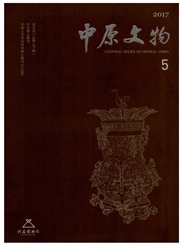

 中文摘要:
中文摘要:
本文对令鼎铭文一些关键字句和藉田礼的举行时间、仪节及其与燕射礼的联系及其他相关问题作了新的考释与论证,提出了自己的看法。认为令鼎铭文没有记时语,所记大藉礼是周昭王在初春开耕时举行的一次藉田礼,王驭、耕、觞均是藉田礼的重要仪节,觞在藉礼与射礼两个礼仪之间起着承上启下的作用,其举行地点西周时期是在藉田礼的现场,春秋战国时期则改在太寝,名称也由觞、飨食而变为劳酒;这次大藉礼的礼仪行事有些流于形式,说明当时礼仪制度的践行就已经开始向草率方向发展;漾宫应释为康宫,该铭又为康宫原则增添一例证。
 英文摘要:
英文摘要:
Based on a new textual decipherment of the inscription, the present paper puts forward its own views concerning the key words and sentences and the time and ceremonial details of Jitian Rite and its rela- tionship with Yanshe Rite and other relevant problems. There was no time record in the inscription on Ling Tripod and the Great Ji Rite in the inscription was a Jitian Rite at the beginning of ploughing in an early spring by King Zhao of Zhou, and the royal driving, the ploughing, the banquet were important ceremonial details. The banquet was a turning point between Ji Rite and Yanshe Rite, and the place of Yanshe Rite was the same as Jitian Rite in West Zhou, and during The Spring and Autumn Period and the Warring States Period the place moved to Taiqin (the ancestral temple) and the name had changed from Shang and Xiangshi to Laojiu. This time the Great Ji Rite had become a mere formality, indicating that the practicing of ritual system had gradually become a mere formal matter. Lian (溓) temple should be interpreted as Kang (康) temple, and this inscription offers as a new evidence for the Kang temple Principle.
 同期刊论文项目
同期刊论文项目
 同项目期刊论文
同项目期刊论文
 期刊信息
期刊信息
